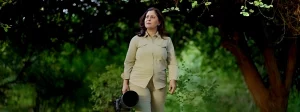(July 25, 2025) In a cramped Mumbai apartment, three vultures lived an unnatural life — kept as pets, far from the wild skies they were meant to soar. When they were finally rescued and brought to Pune’s RESQ Charitable Trust, they couldn’t even tear into a carcass. What followed wasn’t just rehabilitation, it was rewilding. At the forefront was conservationist and wildlife filmmaker Suyash Keshari, whose initiative, Ameliya Safaris, has long championed hands-on wildlife rehabilitation. This wasn’t just about releasing birds back into the wild; it was about helping them remember who they were. And in June, they finally took flight into the wild where they truly belong.
The rescue was made possible through a ground partnership between Ameliya Safaris and RESQ Charitable Trust – an alliance that channels a portion of Ameliya’s safari proceeds directly into funding on-the-ground wildlife rescue and rehabilitation efforts. It’s a model rooted in impact, where travel contributes meaningfully to conservation.
“Rehabilitation of animals is a long-term ongoing program,” says Suyash whose team has also rescued 350 turtles and tortoises that had been captured by illegal pet traders and were being smuggled to an undisclosed location outside India. “Thanks to timely intervention by the authorities, the animals were intercepted before they could be trafficked. They were then brought into our care, where they underwent months of rehabilitation before being released back into the wild,” adds Suyash, the founder of Ameliya Safaris, which believes safaris should create impact — not just memories. It’s a conservation-first initiative that runs safari experiences across India and Africa, while actively supporting wildlife rehabilitation, habitat restoration, and community-led efforts on the ground.

Suyash Keshari, the founder of Ameliya Safaris
From Capitol Hill to Central India: a return to the wild
After graduating from Wake Forest University, North Carolina with a degree in politics and international affairs along with minors in journalism and entrepreneurship, Suyash landed a job at the US Capitol. “I ended up working at the US House of Representatives and later joined a political advocacy firm, which was my second passion,” Suyash tells Global Indian. But even amid the buzz of Washington, his heart was elsewhere. Wildlife, his first love, kept calling him back, a passion he had once put aside because of societal expectations in India. “Back then the ability to blend choice, creativity and expression with entrepreneurship barely existed. Everyone, including my teachers, convinced me to tread the conventional path.”
But in 2019, at just 22, Suyash found his heart calling him back to Central India – the land where he was born and raised. Having grown up watching tigers, Suyash often spoke about conversation online, until he realised he was just an “armchair conservationist”. That realisation changed everything and he quit his cushy job and decided to give his passion “a 1000 percent.” “I was keen to turn my passion into something real, and that’s when I decided to come back home,” says Suyash.
However, things didn’t go as planned. Less than a year after his return, the pandemic hit – putting everything on pause. But not one to give up, he slowly found his footing again. He launched virtual safaris, began hosting in-person experiences through Safari with Suyash, and even collaborated with WWF International on a storytelling series.
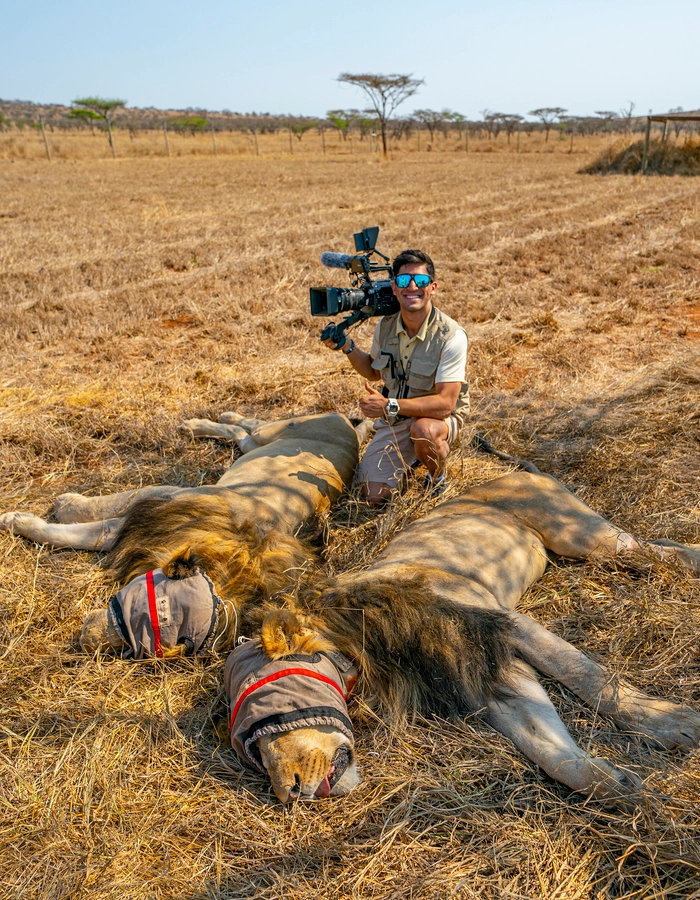
Solo safaris to a global conservation movement
Suyash’s journey began as a filmmaker and presenter, crafting documentaries and telling stories from the wild. But as more people connected with his work and started reaching out, asking to join him in the field, the idea for Safari with Suyash began to take shape, turning his storytelling into immersive, real-world experiences. But by 2022, the virtual safari format had run its course. “People wanted to experience wildlife in person, so we transitioned fully to in-person safaris,” he explains. “Not only I loved it but we could see the significant impact – from supporting anti-poaching efforts to creating conservation infrastructure like water holes to empowering local communities.”
What started as a one-person safari experience soon evolved into a growing community – and eventually gave birth to Ameliya Safaris. “I realised that to grow and sustain for a long time, I needed to involve more people for a bigger vision,” says Suyash. “I wanted to build something like Safari with Suyash, but not dependent on my daily presence on the ground. That’s how Ameliya Safaris came into existence.” Today, Ameliya Safaris has expanded to nine countries and broadened its conservation efforts. “With Safari with Suyash, we focused on initiatives like anti-poaching camps, electrifying them, digging water holes, and employing locals. But with Ameliya Safaris, we’ve taken it a notch higher,” he shares. “We’ve launched reforestation programs, planting over 500 trees in the Bandhavgarh buffer zone, and also partnered with a wildlife rescue unit near Pune to rescue, rehabilitate, and release animals caught in human-wildlife conflict. We realised we can create a huge impact through a bigger vision and philosophy.”
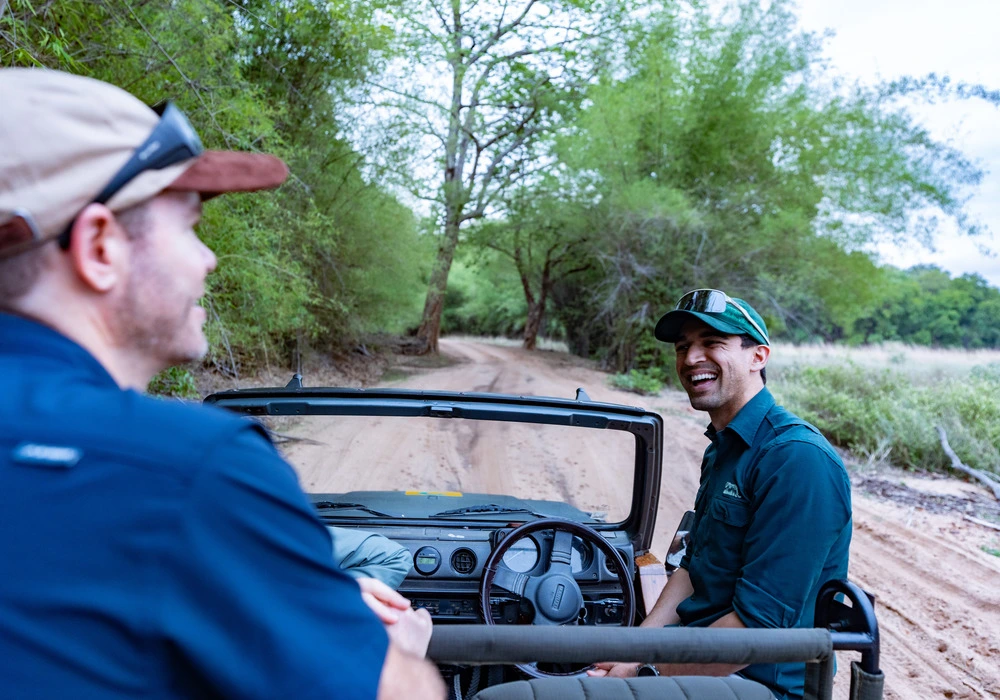
A safari model rooted in conservation, not just luxury
What sets Ameliya Safari apart from traditional safari models is its deep-rooted commitment to conservation. “For us, conservation isn’t a byproduct – it’s been at the heart of everything from day one,” says Suyash. “When I started out as a wildlife presenter, I wanted to raise awareness about the plight of animals and our natural ecosystems which can lead to actionable outcomes.” Unlike most safari models, Ameliya Safaris puts impact at the heart of every experience. “Our prime focus is the location and within that, how can we create a positive change. Whether it’s through carbon offsetting, generating tourism revenue for local communities, or sharing knowledge that helps villages protect their ecosystems, the idea is to bring together conservation, empowerment, and responsible luxury,” he explains. “There are very few companies in India that lead with a conservation-first approach. Social entrepreneurship in wildlife tourism is still missing.”
Much of Suyash’s approach has been shaped by conservation efforts in Africa. “They push you to explore remote areas and support companies with conservation commitments. That empowers local communities, supports forest departments through fees, and channels tourism for long-term impact,” he says. “We’ve tried to do the same – from building water holes, driving reforestation, to supporting anti-poaching efforts — and all of this has been possible because of our guests. We couldn’t have made those water holes without them.” At Ameliya Safaris, 5 percent of every itinerary goes directly to the Ameliya Conservation Fund, making conservation a built-in part of the experience. “With Safari with Suyash, we had built one water hole — and within just three days, a tiger family moved in. That’s the kind of impact you can see. And that’s what makes it all worth it.”
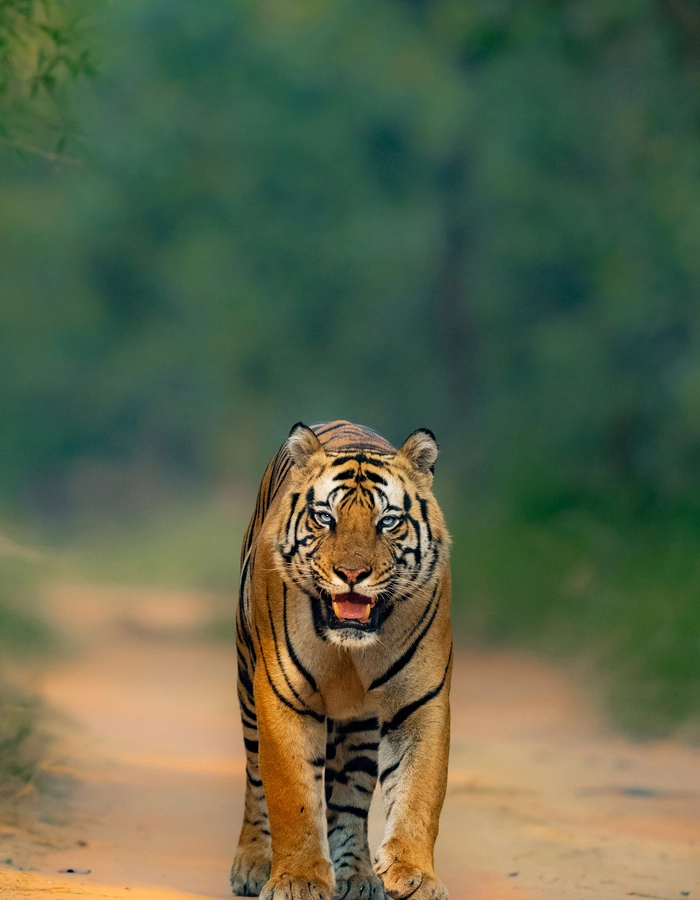
Over the past few years, Suyash has taken people on one-of-a-kind safaris, and in the process, made an important observation. “Only about 10 percent of the Indian audience is genuinely interested in safaris that prioritise nature and conservation,” he says. “Unfortunately, most people are focused on getting the best deal.” But even that, he believes, can lead to positive change. “The remaining 90 percent may not come in for conservation, but if they choose us, it’s still a win-win. Because we contribute 5 percent of every itinerary on their behalf, even if they don’t know how to give back themselves.”
Ameliya Conservation Fund: From Reforestation to Rehabilitation
Under the Ameliya Conservation Fund, Suyash and his team are leading on-ground conservation initiatives that are creating tangible impact. “We recently planted 500 native trees and several species of grass in the buffer zone of Bandhavgarh,” he shares. “Many parts of our wildlife sanctuaries are becoming fragmented due to farmland expansion, deforestation, and the spread of villages and cities.” To address this, the team identifies fallow land – areas that were once cultivated but now lie unused – within the Bandhavgarh reserve. These are then restored using native vegetation. “While some wildlife depends on trees, many species actually thrive in grasslands,” says Suyash. “Grasslands are an incredibly important ecosystem as they help with wildlife movement and are pastures for wildlife. In a few years, this buffer will turn into a complete forest.”
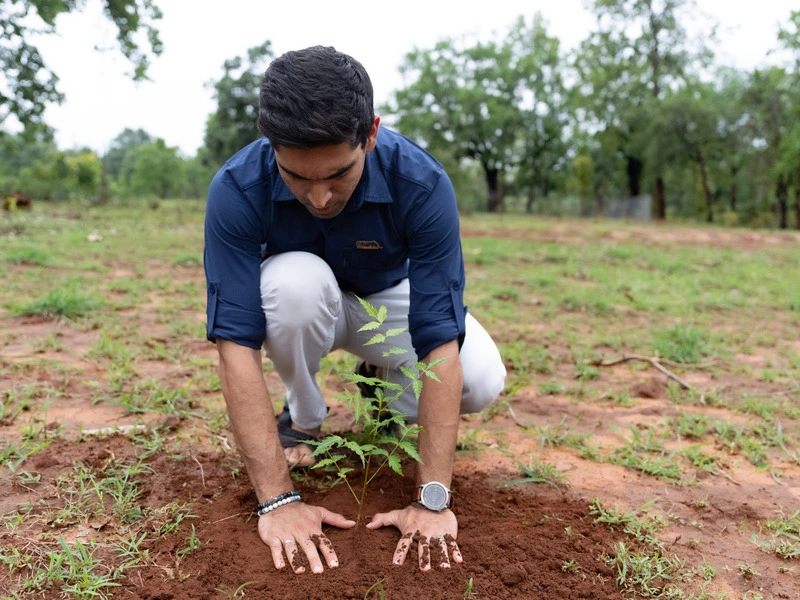
Since water is just as vital as fodder in sustaining an ecosystem, Suyash and his team built a water hole earlier this year as part of their habitat restoration efforts. “We created a catchment area of about half an acre to help recharge groundwater,” explains Suyash. “It’s not only improving the water table, but also serving as a crucial resource for animals, birds, and even predators. Amphibians like bullfrogs now have a safe breeding ground to lay eggs and for their young to develop. So while the larger wildlife benefits, the micro-fauna including frogs, insects, and aquatic species is being revitalised too,” adds Suyash, who informs that rehabilitation of animals is yet another area of focus for the Ameliya Conservation Fund.
Bridging the Gap Between Wildlife and Communities
But for Suyash, conservation doesn’t end with wildlife. It must include the people who share space with it. He points out that local communities living around forests in India have often borne the brunt of tourism, yet rarely benefit from it in the way they should. The 29-year-old compares it to Africa, where community-owned reserves are common — one community of 100 families might own 1,000 square km of land, and any tourism activity on that land requires visitors or companies to pay $100 per person per day, which is then shared equally among the families. “In India, that money usually goes to the government, not the communities. And these are the people to whom our national parks and tiger reserves truly belong.”

While these communities often lack formal skills, Suyash insists they are highly trainable, eager, and full of potential. That’s why Ameliya Safaris integrates them into conservation-based tourism — whether it’s hospitality, guiding, or community walks that offer guests a chance to understand rural life. “It empowers them. For many of our guests — Indian and foreign — the village walks or community sensitisation trips are eye-opening. We sit in a local’s house, talk to them over tea, know their stories and get humbled by the fact that people are living in very different conditions, especially with the conversation around human-animal conflict. Conservation is about striking a balance – between nature, wildlife, and the people who live alongside it.”
The Challenges of Conservation in India
For Suyash, the real challenge in conservation isn’t just ecological — it’s mindset-driven. “The Indian mentality around travel is still rooted in getting the best deal,” he says. “People are busy, yes, but they can still empower those working at the grassroots — if they choose to.” While Ameliya Safaris partner only with properties that hold high PUG eco-ratings and is a member of TOFT (Tour Operators for Tigers), he admits that convincing Indian travellers to understand the cost of real conservation — from building water holes to funding anti-poaching efforts — remains an uphill task. “Conservation is expensive,” he says. “But once people see it with their own eyes through our safaris — they’re changed forever. That’s how we shift mindsets.”
View this post on Instagram
But for conservation to truly thrive in India, he believes the challenge runs deeper than just traveller awareness. The problem, he says, is that wildlife conservation still isn’t actionably mainstream. Conservation in India, he argues, has become too focused on a handful of species, especially big cats, while entire ecosystems that support lesser-known species like amphibians, the Indian bustard, or Indian wolves are overlooked . Moreover, he adds that over bureaucratisation is stifling impact. “Our forests are so heavily controlled by bureaucracy that private or responsible operators can’t engage fully.” For him, the solution lies in collaboration. “It’s time for real public-private partnerships in conservation. The government can’t do it alone, and private players shouldn’t be kept at arm’s length when they’re offering value. We need shared ownership of our natural resources.”
Taking Impact-Driven Safaris Global
Ameliya Safaris has steadily grown beyond India, now operating across South Africa, Namibia, Zimbabwe, Zambia, Botswana, Kenya, Tanzania, Rwanda, and Uganda — with plans to expand to Brazil’s Pantanal region in 2026. In each of these places, the focus remains the same: creating tangible impact through curated safari experiences and private, tailor-made itineraries. “Our safaris aren’t just about witnessing wildlife; they’re about giving back — to the land and to the people who protect it,” says Suyash.
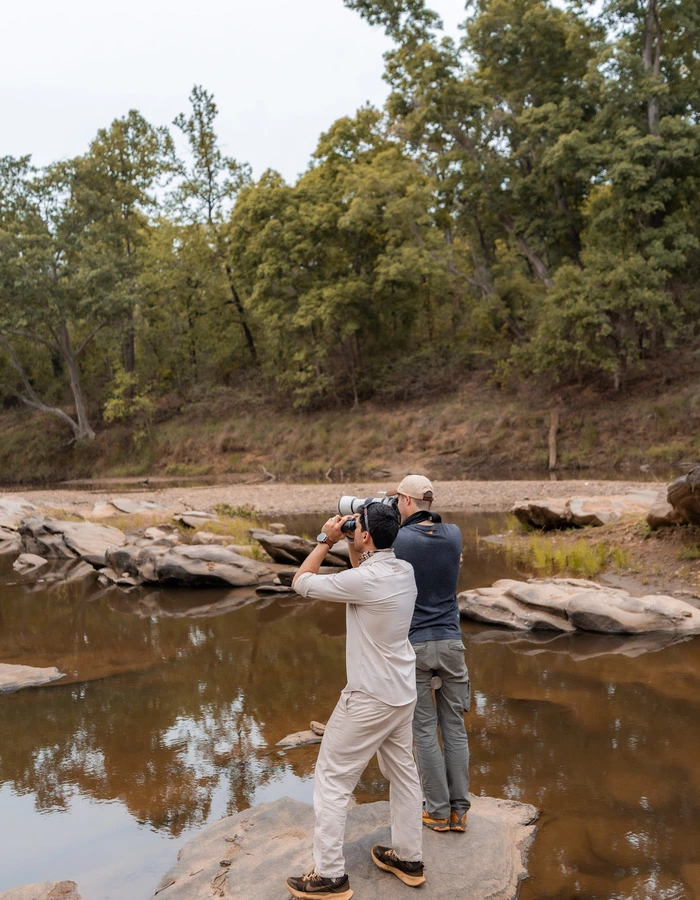
Unlike generic safaris that may leave little behind, Ameliya Safaris partners with community conservancies where, in some regions, $116 per night from each guest goes directly to local communities — supporting livelihoods, healthcare, education, and anti-poaching initiatives. “That’s what Indian travellers need to understand — impact doesn’t come with a discount,” he adds. “If you choose an impact-driven safari, you’re contributing to the long-term sustainability of these ecosystems. But if you choose a standard experience that doesn’t prioritise conservation, there’s a real chance the next generation won’t see what you did.”
At the heart of it all, Suyash’s mission is clear: to bring social and environmental impact to safaris in India, and to be known for it. “I believe in the power of doing small things, consistently,” he says. “For me, every single day is a chance to bridge the gap between humans and nature — while creating experiences that leave an everlasting imprint on people and a positive impact on the planet.”
Also Read: From Ranthambore to the World: How Valmik Thapar changed tiger conservation
Also Read: Conservationist Suprabha Seshan is creating a rainforest at the Gurukula Botanical Sanctuary

